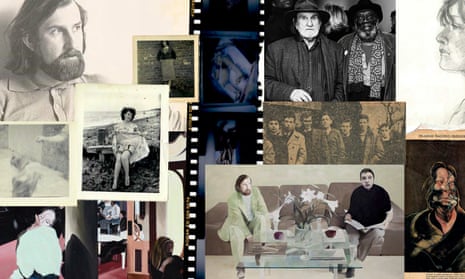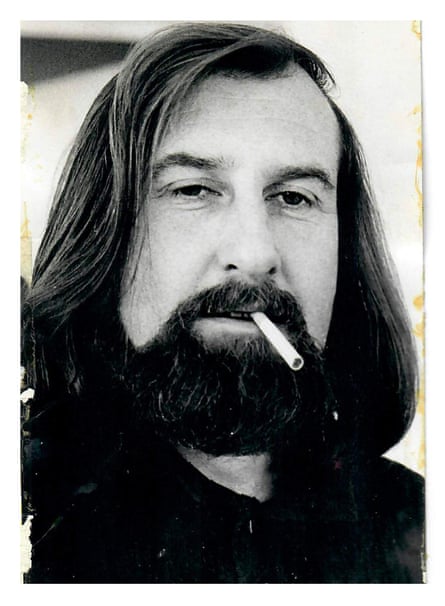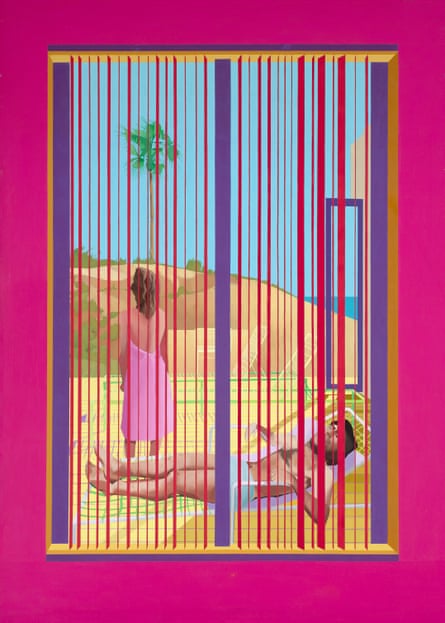Exhibition revives work of anti
- US edition
- UK edition
- Australia edition
- International edition
- Europe edition
- Film
- Books
- Music
- Art & design
- TV & radio
- Stage
- Classical
- Games

Exhibition revives work of anti-careerist British artist Neil Stokoe
Art school contemporary of David Hockney shunned self-promotion but is now subject of retrospective
Lanre Bakare Arts and culture correspondentWed 17 Jan 2024 11.18 EST
Last modified on Wed 17 Jan 2024 14.59 ESTIn 1970, the artist Neil Stokoe looked as if he had all the ingredients for breakout success. He was friends with Francis Bacon, an exhibition of his work was about to open, and he’d been part of the “golden years” at the Royal College of Art, alongside the likes of David Hockney and Frank Bowling.
Yet as his contemporaries’ careers took off, Stokoe and his colourful, large-scale figurative paintings that chimed with 1960s modernism slowly faded from view. But now this largely forgotten figure who appeared during the British pop art moment is undergoing a revival thanks to a retrospective, the first since his death in 2019.
The Saatchi Yates Gallery in London is hosting an exhibition of 14 Stokoe paintings, which, along with a show at the Redfern Gallery in 2015, is one of a handful of times his work has been publicly exhibited.

Stokoe’s contemporaries at the RCA included Hockney, Bowling, Patrick Caulfield, RB Kitaj and Allen Jones. These artists would go on to have careers, exhibitions and – in the case of Hockney and Bowling – become two of the most celebrated British artists of the era.
But his son, Jack Stokoe, who is now looking after the estate, said his father found the idea of being a self-promoting artist anathema. “He had an aversion to ‘careerism’ in the arts,” said Jack. “It was a kind of gut reaction. He didn’t want to be his own gallerist, dealer or sales office.”
Jack puts his father’s revulsion at self-promotion down to the fact he had grown up in County Durham in a coalmining town of Bowburn, where self-aggrandisement was unthinkable.
He said: “Like Hockney, he came from the north, in pursuit, I guess, of culture and opportunity and a very different life to the life that maybe their parents and ancestors had carved out.”

They may have both come from the north, but the pair’s approach to promotion was poles apart. In 2019 it was revealed that a 23-year-old Hockney invited the leading lights of British art to see his first show in Skipton, North Yorkshire. It’s not that Stokoe didn’t have similar opportunities after he left the north-east; he was a friend and contemporary of Francis Bacon, who encouraged him, but whom Stokoe refused to ask for assistance in furthering his career.
“I didn’t want someone who was a friend to do me a favour,” Stokoe said in 2015. “I just felt it would be making use of him. What I didn’t realise at the time was that everybody else was and that Bacon didn’t care.”
Stokoe went into art teaching, notably at Wimbledon School of Art, where one of his students was Peter Doig. But he kept creating art and carried on painting until his death, accumulating hundreds of paintings.
Jack Stokoe rejects the idea that his father turned his back on public life, instead arguing he was selective with when he socialised but that he loved being around people and other artists. “He was quite complex. On the one hand, he was reclusive. On the other hand, at a private view, he could walk in knowing no one and walk out knowing everyone,” he said.
Away from the attention of gallerists and the media, Stokoe created a body of work that spans five decades and was mostly crafted in his home studio in Wimbledon.

Within his work there are often paintings of couples in grand, modernist apartments where, despite the apparent wealth and comfort, there is tension. “I see his life and his artistic work has been kind of having this motor of anxiety or unease,” said Jack. “I’m sure someone like Bacon, I would imagine that his work was powered by a similar kind of psychological motor.”
Although Stokoe’s contemporary Hockney enjoyed early success that continued throughout his career, others from the RCA also had to wait for recognition in Britain. Frank Bowling, for example, had a career retrospective at Tate Britain in 2019, a long overdue event in many people’s eyes, while Pauline Boty has only recently had her work recognised in a male-dominated canon.
Now it is the turn of Neil Stokoe, the reluctant art star, in the spotlight.
Neil Stokoe is at Saatchi Yates, London SW1, from 17 January to 25 February